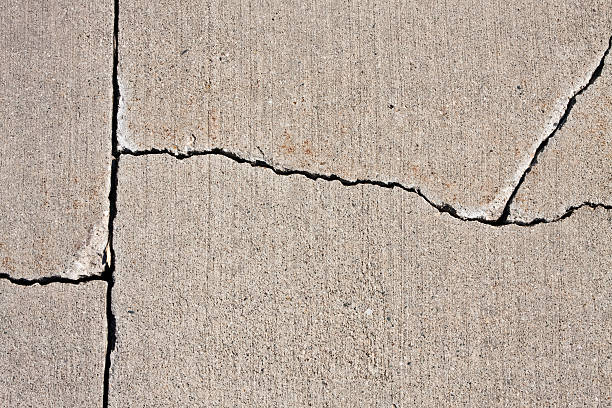How to Repair Cracks In Concrete?
by siteadmin

Cracked concrete surfaces are a tripping hazard, and they can also reduce the aesthetic value of a home. However, fixing these cracks can be done quickly and easily.
Before you begin the repair, clean out the crack by wiping or brushing away any debris. Apply a layer bonding adhesive to the surface of the crack before resealing.
Remove Debris
Concrete is tough, resilient and yet susceptible to ground shifting. It can also crack due to freezing-thawing cycles and ground shifting. Cracks in concrete don't have to affect the value or appearance of your home. With a little effort, you can repair them and prevent their further spread.
Start by using a wirebrush to remove loose concrete and debris. Next, use a shop vacuum or power washer to drain any water that is still in the crack. Before continuing, make sure that all cracks are completely dry.
The second step is to remove any old concrete that has built up around the crack. This will expose new surfaces to bond with existing concrete, and prevent any future cracks. This will allow the new concrete to adhere better to existing slabs and prevent future fractures.
Fill Crack
Hairline cracks are usually not structurally significant, but larger ones can indicate a problem that needs to addressed immediately. Concrete cracks left unattended can lead to further deterioration, which could lead to expensive repairs. However, repairing them is not difficult if you have the time and materials.
Before beginning any crack repair, ensure that the area has been cleaned of loose debris using a chisel. Then use concrete patching compound to fill in the gaps. Cracks should also be large enough to allow for drainage.
Mix crack repair product as per manufacturer's instructions. Then, apply concrete crack filler with a trowel. Work it into the cracks, and then level it off with the surrounding concrete. Please refer to the product label for more information. If not, cover the repaired area with plastic and keep it dry until weather conditions allow curing.
Seal Crack
The most popular products for repairing cracked concrete surfaces are epoxy or latex sealants, which can be injected or poured directly into the crack. Before sealing an area, it is important to remove any dirt, debris, or gravel that could interfere with the adhesion of the sealant.
It's best, before applying the material to the crack, to use a chisel and widen it to increase the surface area. This will make the repair more permanent. Once you've completed this step and cleaned it up, it is time to apply the repair solution.
Avoid using cement to repair cracks as it will not adhere to hardened concrete, and could delaminate over time. Commercial products such as hydraulic cement might not accept paint very well and shrink over time. Instead, use concrete or latex products (check Amazon), which are specifically formulated to seal the cracks while curing up to the right strength.
Clean up
Even with proper care, cracks can appear in concrete installations over time. If left unrepaired these cracks can become larger, causing serious damage to the concrete structure. Most cracks can be repaired with the quick fixes that are available today.
Band-aid solutions involve mixing polymer modified cement products and wiping it over cracks using a trowel. These treatments are not long-term fixes, but they work if the cracks you have are caused by natural concrete maturation and not any other underlying problem.
Before applying a crack-repair product, remove any debris from the surface with a wire broom or brush. Vacuum away dust and grit. Fill your crack with a trowel, and then smooth it out with another trowel. Allow to cure overnight prior to sealing.
Foundation Repair Lexington KY
https://www.foundationrepairlexingtonky.com/
concrete companies lexington ky
concrete leveling lexington ky
Cracked concrete surfaces are a tripping hazard, and they can also reduce the aesthetic value of a home. However, fixing these cracks can be done quickly and easily. Before you begin the repair, clean out the crack by wiping or brushing away any debris. Apply a layer bonding adhesive to the surface of the crack…
Recent Posts
- Collierville Moving Company: Your Trusted Local Movers in Collierville, TN
- Leading the Charge in Louisville’s Junk Removal and Demolition Services
- Exploring the Drawbacks of Duct Cleaning: Insights from Air Vent Cleaning Charlotte
- Expert Cleaners Lexington Shares Essential Tips for Properly Cleaning Hardwood Floors
- Expert Cleaners Lexington Shares Essential Tips for Properly Cleaning Hardwood Floors
